RWB's New Year's Celebration Is Proof Japanese Car Culture Is on Another Level
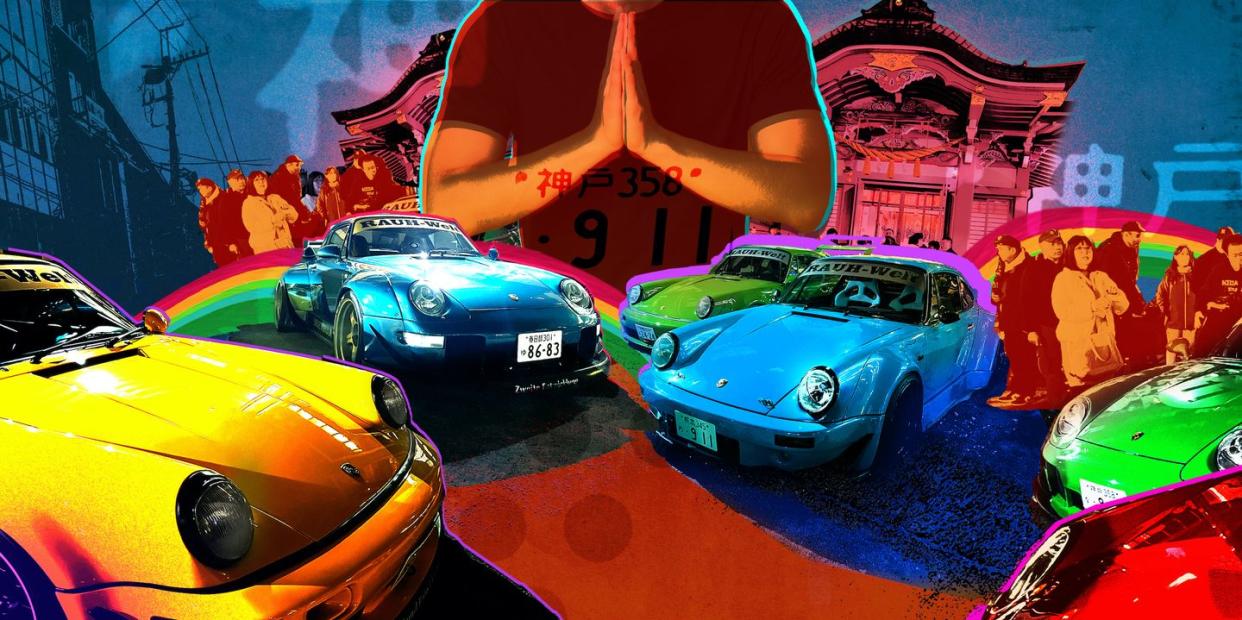
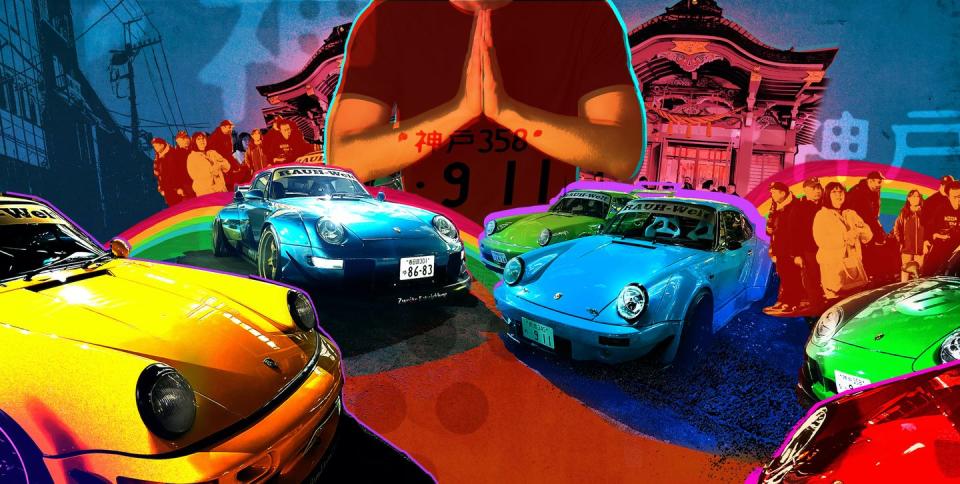
Prior to my trip to Tokyo to watch Nissan unveil the 2024 GT-R at the Tokyo Auto Salon, I had never been to Japan before. From everything I’ve seen online for the past 20-plus years, the locals take car culture seriously. It became abundantly clear just how much passion Tokyo has for cars and the culture after attending Rauh-Welt Begriff’s New Year’s celebration smack-dab in the middle of a bustling cityscape.
Rauh-Welt Begriff, better known as simply RWB, is a Porsche tuner shop in the Chiba prefecture, just outside of Tokyo. The name translates to Rough World Concept in German, a nod to the German cars that Akira Nakai, the company's founder, has modified throughout the years.
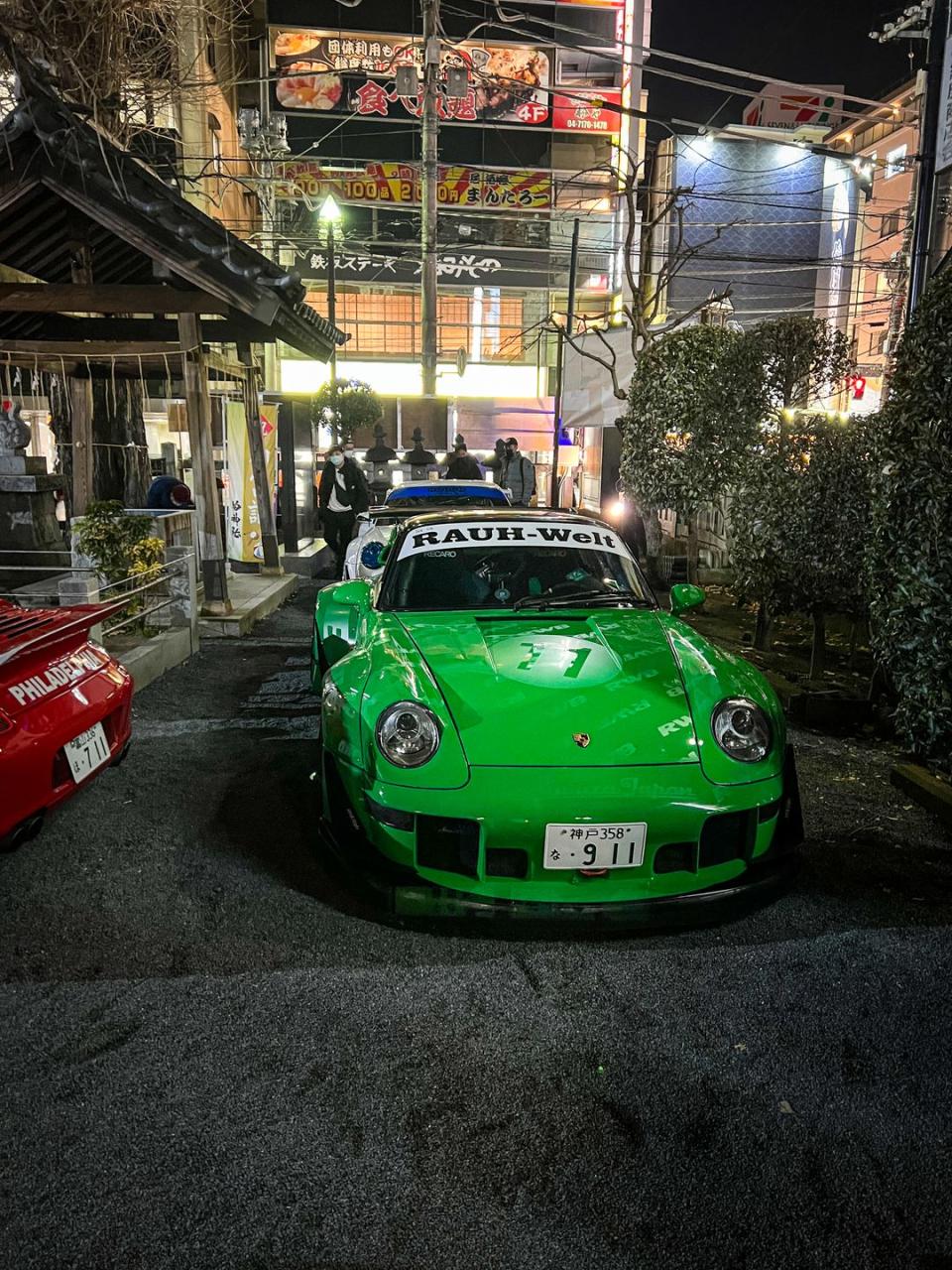
If you're into cars and spend time on the internet, you likely already know of RWB. It builds the most Instagram-friendly cars in existence, cutting up Porsche 911 fenders to create the most over-the-top, outrageously widened show cars. While not everyone is a fan of the shocking modifications, it’s impossible to miss one drive by thanks to their whole-lane-wide track width and gigantic “RWB” stickers plastered on the rear.
As demand grows for high-end customization shops, RWB has gained a serious following. So Nakai decided to put on an event on the heels of the Auto Salon that would bring together customers and fans in a uniquely Japanese way.

I only learned of this event, held far outside downtown Tokyo the night before the Auto Salon was to begin, from a friend I made on my trip to see the new Nissan GT-R: Khyzyl Saleem. He's the genius responsible for designing Travis Pastrana's "Family Huckster," and designs his own wide-body kits using 3D rendering.
From the moments right before we arrived, we were wondering exactly where this meet would actually take place. The only location we were given was a temple with a small garden out front, smack-dab in the middle of a crowded, tight urban environment. There was no underground parking lot, no wide streets, nothing.
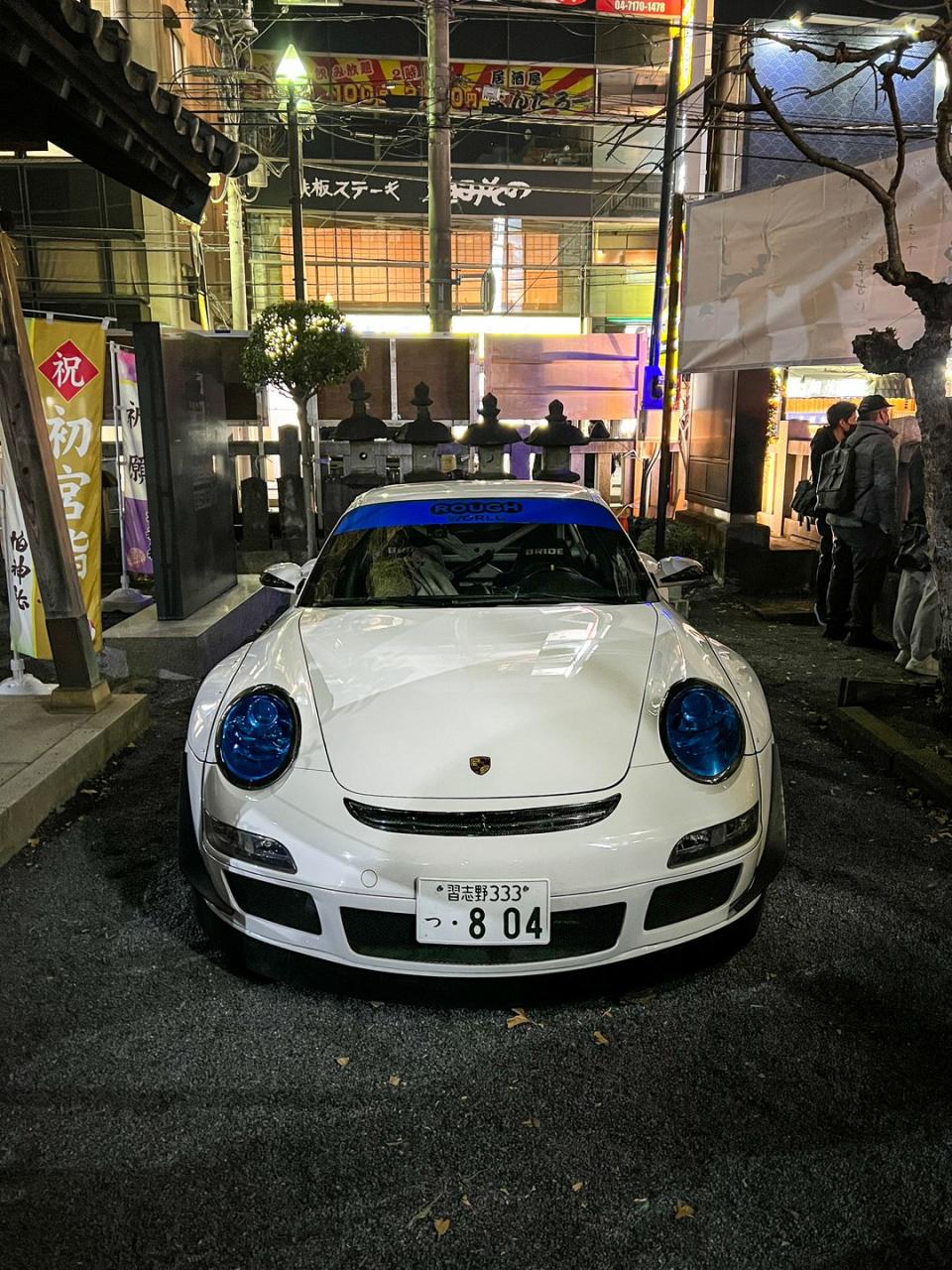
It all became clear once we arrived. The meet was going to take place in the garden. The event had already started when we walked into the garden, RWB-modified Porsches scattered throughout the gravel patches that made up the small area in front of the temple. There were roughly seven RWB cars staged alongside a shrine and a stage, each more ridiculous-looking than the next. After a few minutes more Porsches started to arrive, filling the already tiny space to the brim.
Interestingly, Nakai has a close relationship with the custodian of the shrine, according to Speedhunters, which is what made this meet possible. Seeing such a prominent car figure with such close ties to the community is a fascinating sight. Could you imagine Singer tearing up the grass in New York City’s Washington Square Park late at night for a New Year’s celebration? There’s no way officials in America would let that slide.
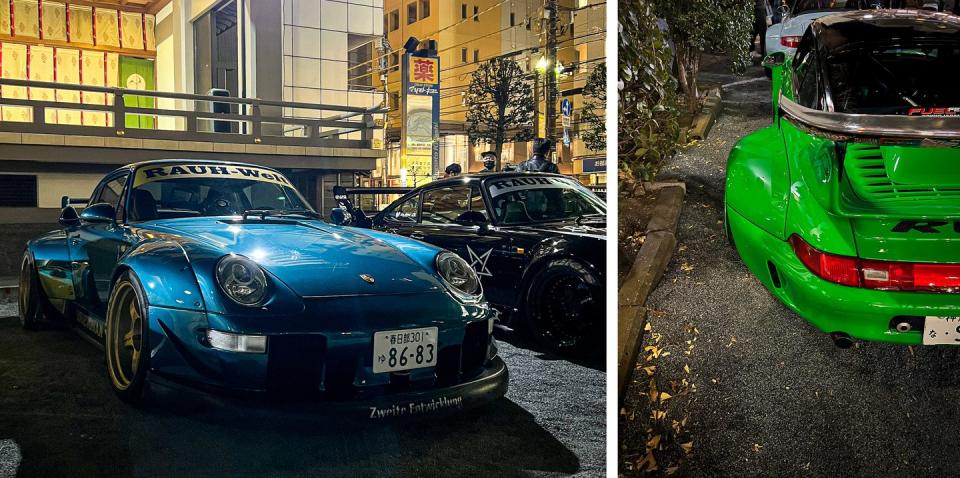
By 9 p.m. a massive crowd had gathered inside to closely inspect the highly modified 911s. It wasn’t just people who had planned to be there, either. Pedestrians walking by couldn’t help but stop to peek, while drivers going about their days pulled to the curb to snag a picture or two for their social media.
A couple of hours into the event, things started to get truly interesting. One of the last RWB cars to pull up to the event was a 997-era cabriolet driven by Nakai himself, followed close behind by a cream-colored G-wagen. Sitting right seat in the Carrera was Cody Walker, brother of the late Fast & Furious actor Paul Walker. Before anyone could stop the two for pictures, both figures made their way to the shrine inside the temple to bow and pay their respects.

After the prayer session, Nakai and Walker make their way to a stage positioned to the left of the shrine, overlooking the garden now filled with hundreds of enthusiasts. They each give speeches thanking the crowd for its love and support before bowing out to let two ceremonial dancers perform a traditional Shinto ritual dance.
The performance is a unique juxtaposition to the average American car meet, which takes place in the parking lot of a coffee shop that tells everyone to leave after a few hours then threatens to call the cops. Even at more formal, organized events in America, I could never see two cultures converging like this. It’s clear just how deeply intertwined the public’s passion for cars and everyday life can be here.
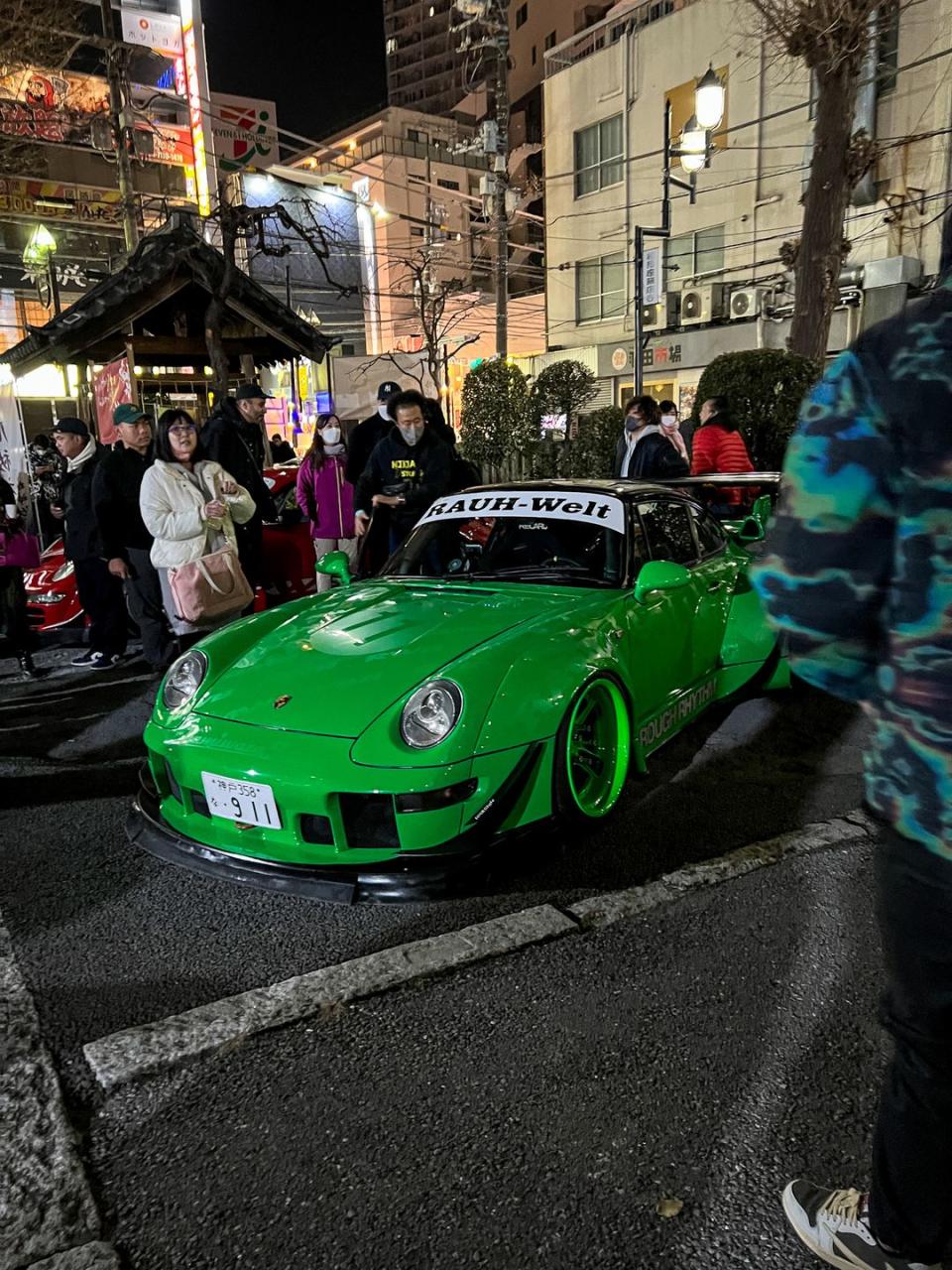
The show went on for a couple more hours after the dance ended, with people filtering in and out to get an up-close look at RWB’s creations. Every owner was happy to pop their engine bays, let people sit inside their cars, and snag as many pictures as they wanted. These are some of the most valuable modified 911s on the planet, yet there was zero elitism in that garden that night.
At that moment I realized how the culture has been able to thrive in Tokyo despite laws, regulations, and an industry shift away from fun cars. In Japan, they do car gatherings right. No one looks down on another’s car, no matter how it looks or sounds. Everyone’s also supremely respectful. People would make sure the zippers of their coats never touched a car’s paint, and drivers never once revved their cars for attention, no matter how many dumb Americans in the crowd egged them on.

The local police, in turn, show the same kind of respect. I saw at least three uniformed officers strutting alongside civilians at the meet, eager to keep the peace and make their presence known, while also checking out the cars on display. Pro photographer Larry Chen told me later on he watched low-riders take to the streets and show off during a late-night cruise. Even then, the cops wouldn’t bother them, as long as they weren't being noisy or impeding traffic. If you’re not disturbing the public, the cops will leave the car community to enjoy their cars.
Meets like this one make it easy to understand why Tokyo and Japan are Meccas for the car enthusiast. Aside from the incredible JDM cars at every corner, there’s also a deep-seeded community dedicated to keeping car culture alive and thriving. No other city I’ve been to—yes, even in Los Angeles, the car capital of the world—has this type of passion for cars so centrally implanted into its culture. If I had to pick any place to live and explore my passion for the automobile, it’d be here.
You Might Also Like

 Yahoo Movies
Yahoo Movies 
